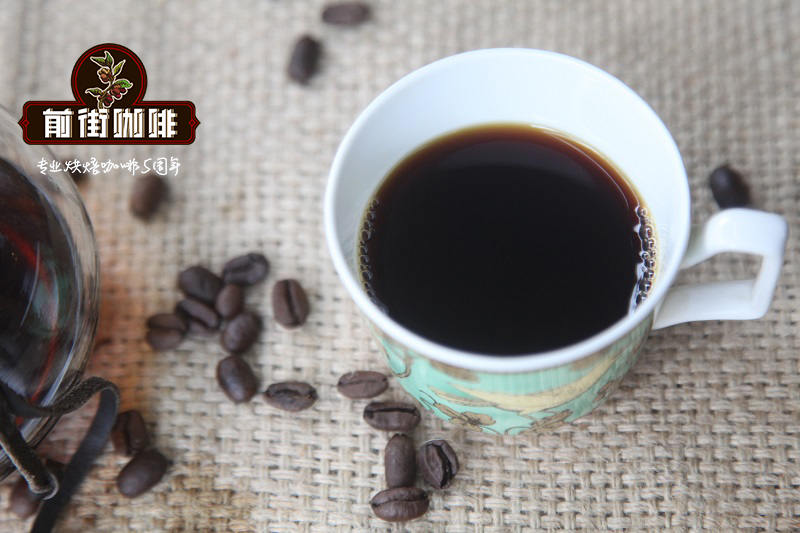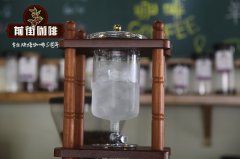Yemeni mocha ishmali production area introduction ancient method sun treatment method is what?

Professional coffee knowledge exchange More coffee bean information Please pay attention to coffee workshop (Weixin Official Accounts cafe_style)
It is said that in the 17th century Europeans imported coffee for the first time and spread it all over the world. Neighboring Ethiopia across the Red Sea also exports coffee through Mocha port, so Ethiopian sun-cured coffee is often called mocha. Although Ethiopia was the first country in the world to discover coffee, Yemen was the first country in the world to produce coffee on a large scale as an agricultural crop. Because all coffee sacks exported were printed with MOCHA marks to prove that they were transported from Mocha Port, Europeans called the delicious coffee shipped from Mocha Port "Mocha Coffee". (such as mocha ethiopia harrar)
Today, Mocha's old port has long been abandoned due to siltation (today's place name Al Makha), and it has become a historical port with only white sand beach left. Instead, it is exported from Hodeida Port in the northwest. However, people have long been accustomed to Mocha's name, and Mocha's name is resounding in the sky. Yemeni mocha is the originator of the world coffee trade and has contributed to the promotion of delicious coffee to Yemen all over the world. It is called "Arabic Coffee", which is also the origin of the name of "Arabica Original".
Yemeni coffee is rich in flavor, complex, wild, mellow, strong fermentation flavor and low acid quality, plus Yemeni coffee often contains an uncertain factor (when the season rains), it is not an exaggeration to call her the most special coffee in the world.
Ancient solarization:
Yemen is a classic of sun-baked early flavor, and the only country in the world to produce fully sun-baked coffee. The traditional treatment method of dripping is illegal. It has not changed since the 17th century when Europe was fascinated with game mocha. This is related to the extremely dry climate in Shumen, where coffee is mainly grown in the central highlands, with an average annual rainfall of only 400-750 mm, far below the optimal rainfall of 1,500-2,000 mm in Arabica. Because water scarcity has prevented farmers from introducing more advanced washing methods so far, wild aroma trumps khala coffee, so Yemen is the best choice to experience the ancient taste.
The central highlands of Yemen are rugged and dangerous. Most small farmers adopt the cultivation method of dividing into parts. A few plants are planted on steep slopes and dozens of plants are planted on terraces or steep cliffs. Each has different soil and water and microclimate, so the aromatic composition is also different.
Yemeni farmers 'sun treatment method is rougher than Ethiopia's. Coffee berries grow naturally on trees without using any artificial fertilizers and pesticides. In summer, they receive a small amount of rain and fog on hillsides to moisten and blossom. In dry winter, mature coffee berries are allowed to hang on trees and dry naturally until the fruits naturally dry on branches and turn purple and black. They fall to the ground before picking up. This is different from the delicate sun exposure of Yekashefi or Sidamo to pick red fruits and lay them on an "elevated net bed", which is the main reason why Yemeni coffee is especially heavy.
Mokha Ismaili: one of the traditional ancient tree species, some say producing area, a market name for a famous coffee from central Yemen, also described as a plant classification of traditional Yemeni coffee, with high beverage quality. It is grown at an altitude of 1981 meters in rugged mountainous areas, characterized by rounder beans, less uniform in size, smaller beans than Madali, thicker in taste, and higher in complexity, often exceeding Madali performance. This is the least produced and most expensive Yemeni mocha (Yemeni mocha is already not cheap). Mocha ismaili of excellent quality is produced in the mountain side of Hirazi district (although famous as Bani Matar, it is the best production area in Yemen), the highest altitude of Hirazi district is 2438 meters!
Qianjie Coffee: Guangzhou's baking shop, small store but a variety of beans, can find a variety of famous beans, but also provide online store services. https://shop104210103.taobao.com
Important Notice :
前街咖啡 FrontStreet Coffee has moved to new addredd:
FrontStreet Coffee Address: 315,Donghua East Road,GuangZhou
Tel:020 38364473
- Prev

Introduction to the taste of coffee beans at Manor San Marcellino in El Salvador-how to make coffee beans in El Salvador
Professional coffee knowledge exchange more coffee bean information please follow the coffee workshop (Wechat official account cafe_style) Salvadoran coffee bean taste introduction this Salvadoran coffee from the San Marcellino estate with creamy, caramel and roasted hazelnut aromas, slightly cedar aromas, roasted with creamy maltose and caramel flavor, light jasmine flavor
- Next

El Salvador Coffee Brand Miravalle Mirabella Manor _ Mirabella Manor how to drink Black Honey
Professional coffee knowledge exchange more coffee bean information please follow the coffee workshop (Wechat official account cafe_style) treatment: washing (Wash) altitude: 1650 meters above sea level: bourbon certification: tropical rain forest certified roasting degree: shallow roasting extraction: Saifeng roasting day: 2018-9-12 tasting day: 2018-9-14 COE jury: aroma / flavor peach, cherry, black
Related
- Detailed explanation of Jadeite planting Land in Panamanian Jadeite Manor introduction to the grading system of Jadeite competitive bidding, Red bid, Green bid and Rose Summer
- Story of Coffee planting in Brenka region of Costa Rica Stonehenge Manor anaerobic heavy honey treatment of flavor mouth
- What's on the barrel of Blue Mountain Coffee beans?
- Can American coffee also pull flowers? How to use hot American style to pull out a good-looking pattern?
- Can you make a cold extract with coffee beans? What is the right proportion for cold-extracted coffee formula?
- Indonesian PWN Gold Mandrine Coffee Origin Features Flavor How to Chong? Mandolin coffee is American.
- A brief introduction to the flavor characteristics of Brazilian yellow bourbon coffee beans
- What is the effect of different water quality on the flavor of cold-extracted coffee? What kind of water is best for brewing coffee?
- Why do you think of Rose Summer whenever you mention Panamanian coffee?
- Introduction to the characteristics of authentic blue mountain coffee bean producing areas? What is the CIB Coffee Authority in Jamaica?

